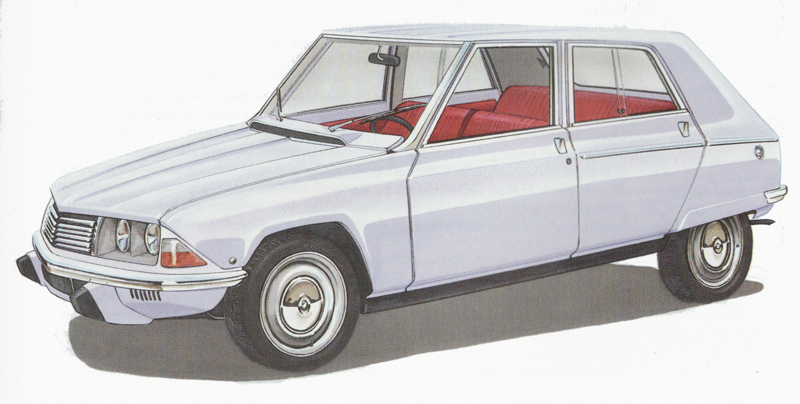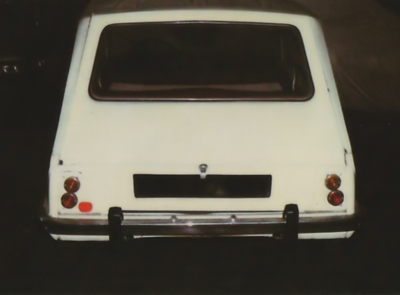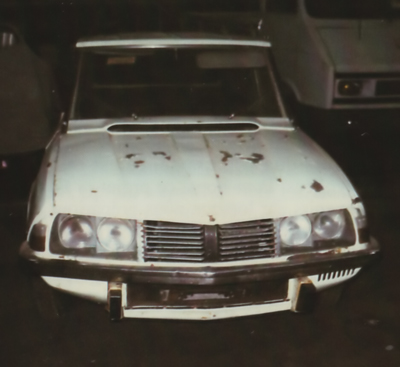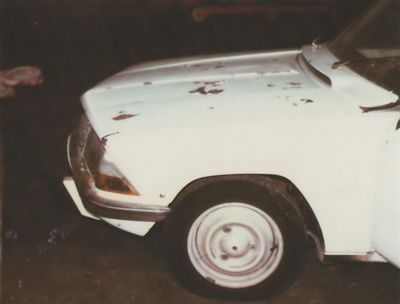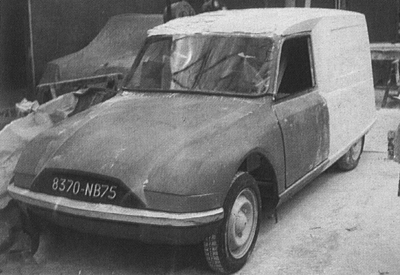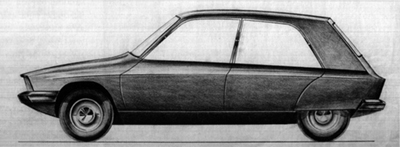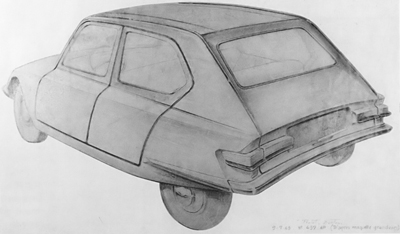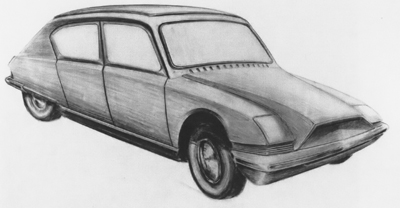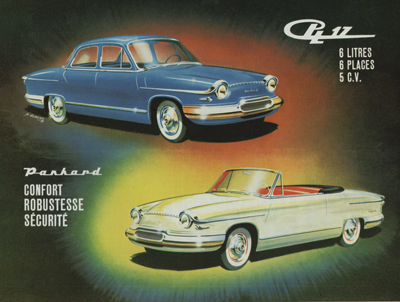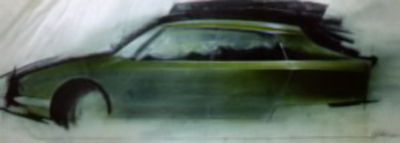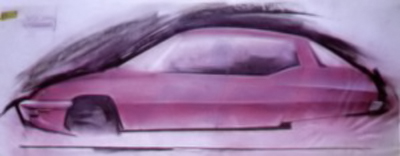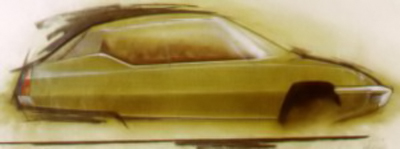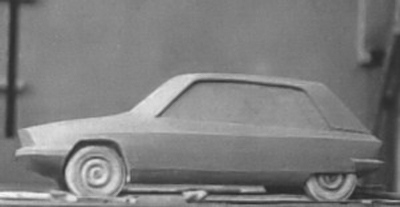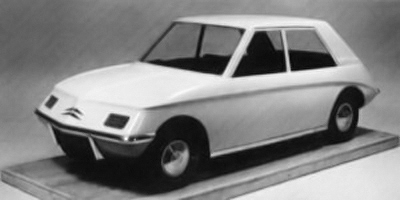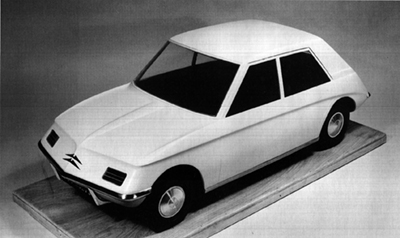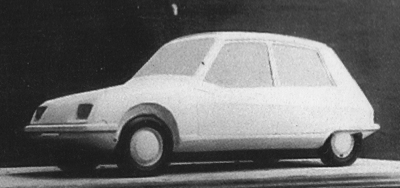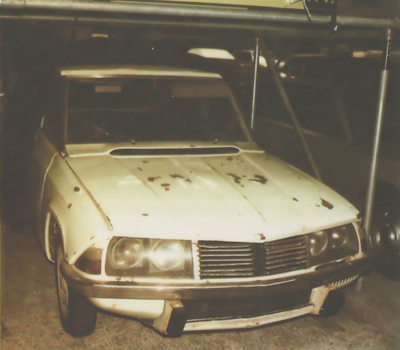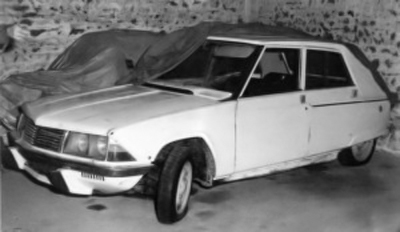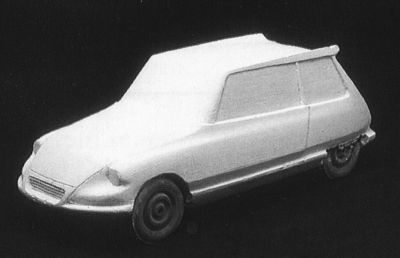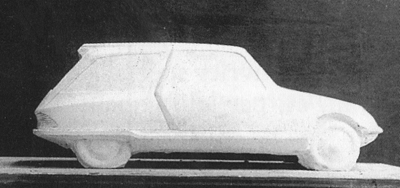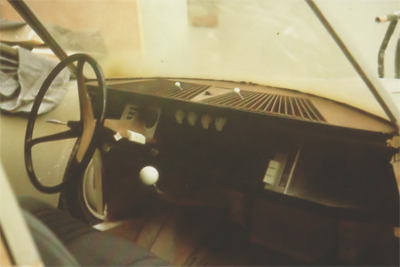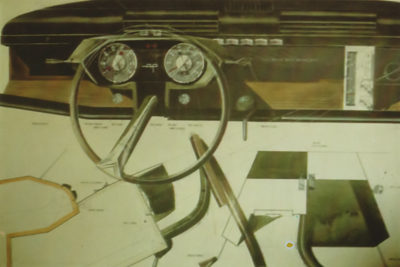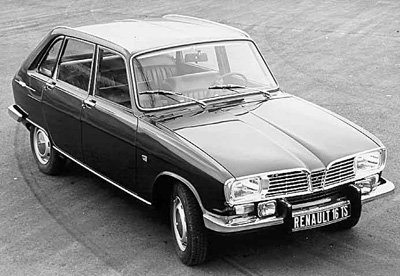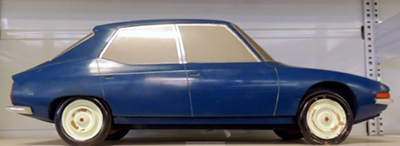|
Projet F (also known as
Projet AP) was to have been the definitive
middle range Citroën and was conceived in
four versions
-
base model powered by a bored out to 750cc
version of the 2CV
flat twin with torsion bar suspension
-
flat four, air-cooled
one litre with torsion
bar suspension
-
1600cc transverse
mounted water cooled unit derived from
the DS
engine with torsion
bar suspension
-
a top of the range model
powered by a Wankel
rotary engine and fitted with hydropneumatic
suspension and powered disc brakes.
Design work
started in the early sixties following the
decision to abandon Projet C.
While the
use of advanced techniques such as front wheel
drive and hydropneumatics had been enough to
put Citroën at the forefront of automotive
technology during the preceding thirty years,
it was felt that something new was required if
the company were to maintain its reputation.
That something was the Wankel rotary engine
and a joint venture was set up with NSU to
build the powerplants.
In 1963,
there were three prototypes:
-
AP1
with torsion bar suspension and friction
dampers mounted in the wheels; powered by
the 602 cc Ami
6 engine; 125x14 tyres and weighing
555 kg
-
AP2
with hydropneumatic suspension; powered by
an air-cooled flat four 1130 cc engine
derived from Projet
C; 135x14 tyres and weighing 610 kg
-
AP3 with
hydropneumatic suspension; powered by a
950 cc engine sourced from Fiat; 135x14
tyres and weighing 640 kg
Flaminio
Bertoni was responsible for the body
design (which proved to be very unaerodynamic)
but unfortunately he died in 1964 leaving
newcomer Robert
Opron to complete the exercise.
A number of
innovations were to be found - this would have
been the first hatchback (if one ignores the Traction
Commerciale which was intended as a
utility vehicle) , the door frames were welded
to the roof in much the manner used by the yet
to be released Renault 16
and the use of four headlamps behind a glass
panel anticipated the SM's
styling.
Unfortunately,
the Wankel engine proved to be unreliable,
thirsty, and very dirty (it would take another
forty years until these problems were solved
by Mazda), there were problems with body
rigidity, the two versions (torsion bar and
hydropneumatic) differed in length from one
another, the conventionally sprung vehicle
suffered too great a variation in ride height
between unladen and laden states and there
were problems with road holding and handling.
Furthermore,
there was a considerable shortfall in
refinement when the prototypes were pitted
against the C60
prototype.
|
